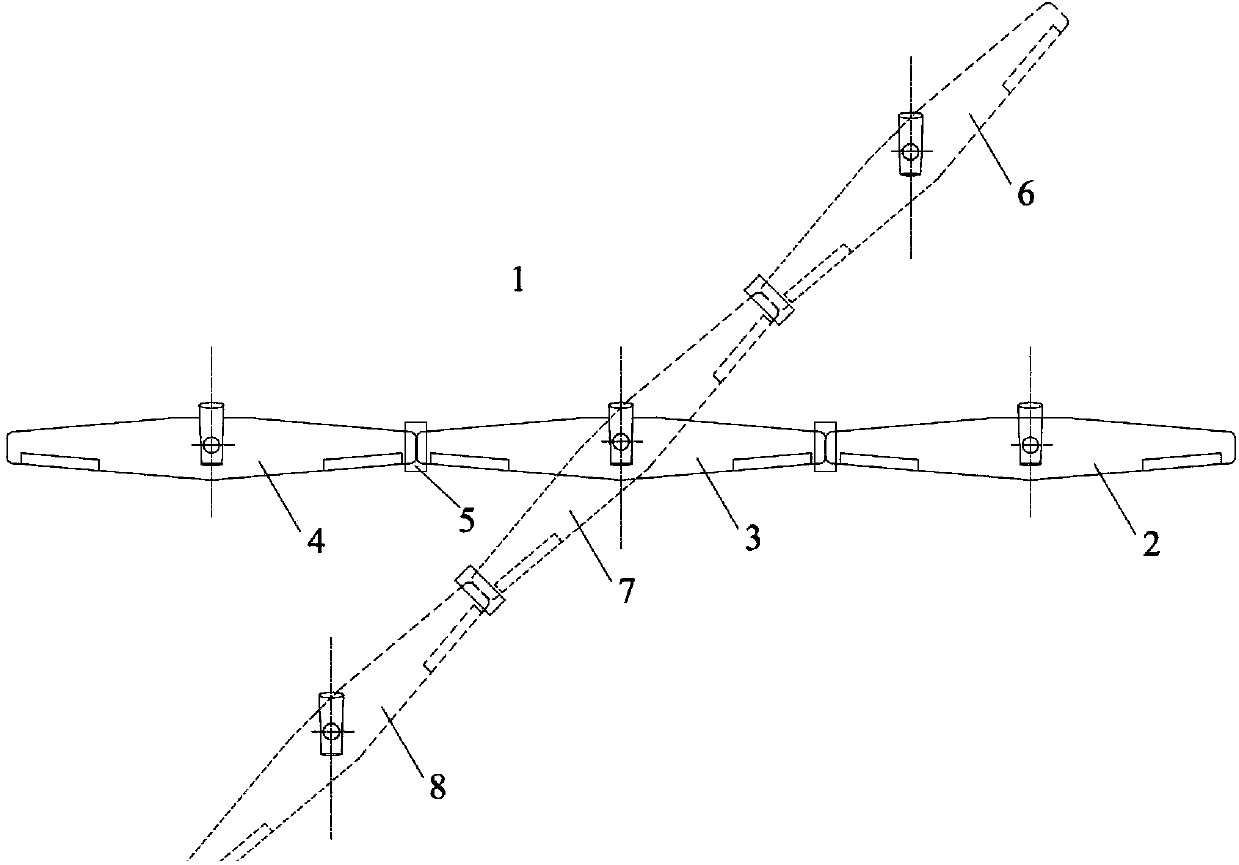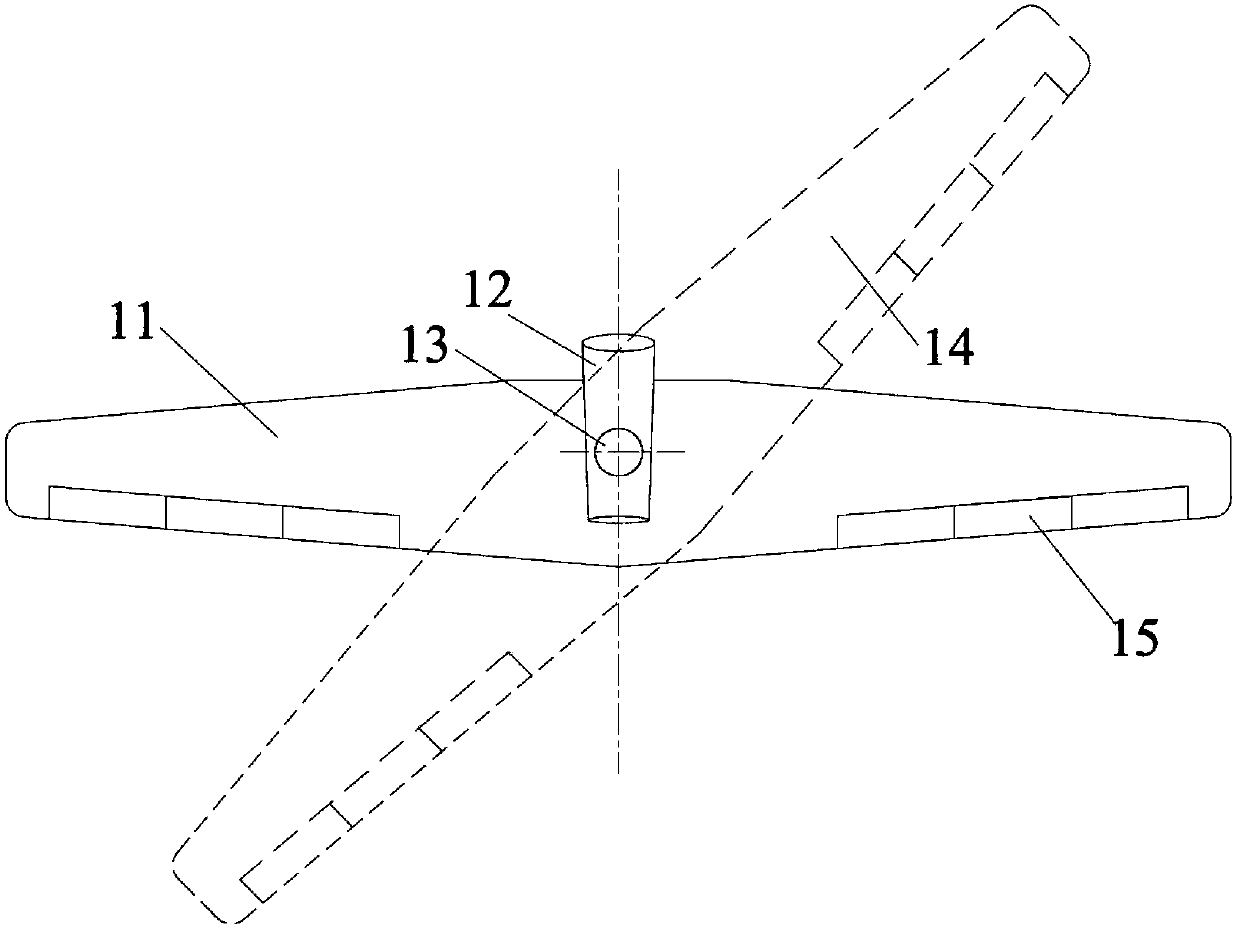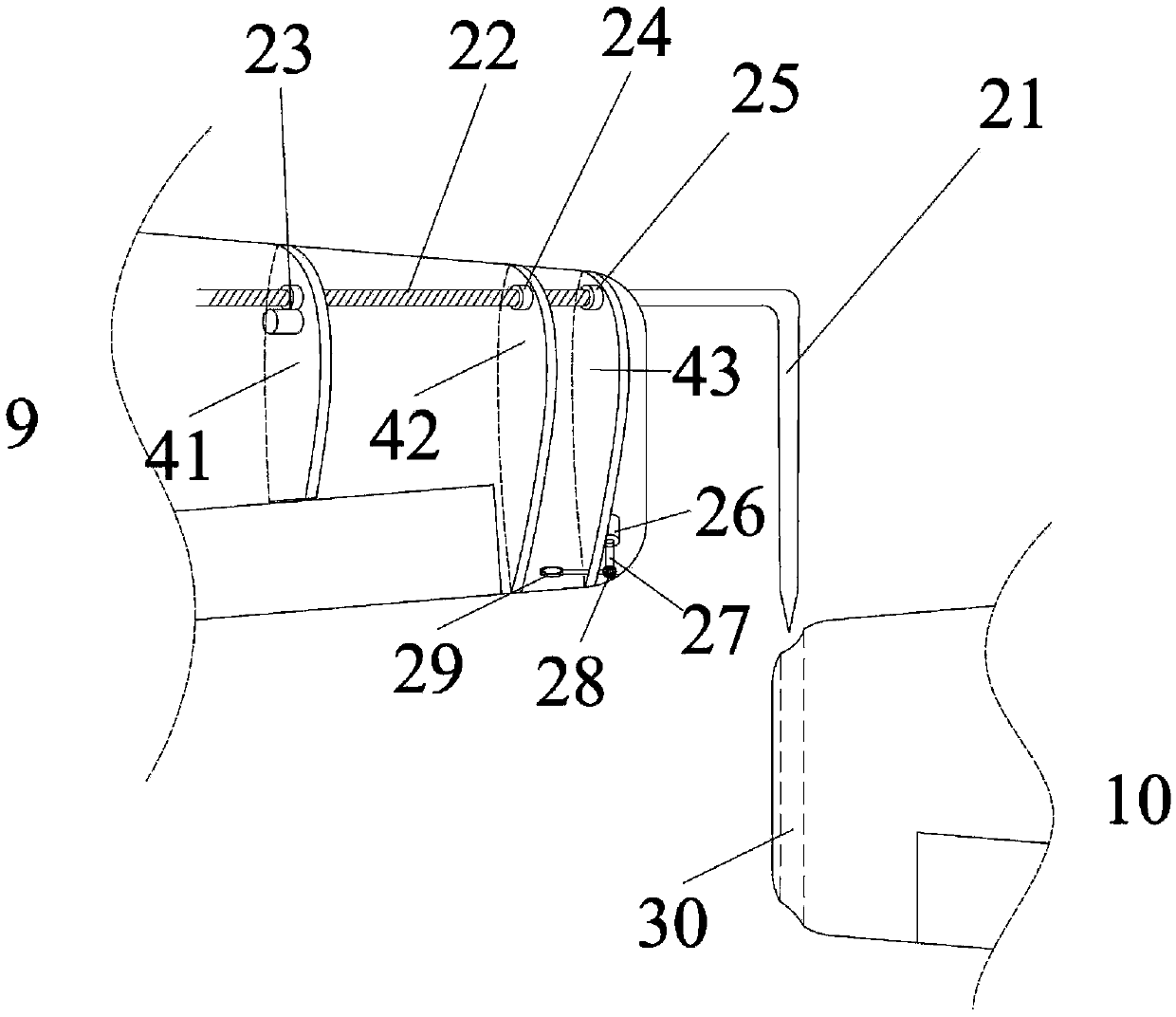System composed of all-wing unmanned planes capable of making wings oblique and connected in parallel through coupling of wingtips
A technology of unmanned aerial vehicles and flying wings, applied in the field of unmanned aerial vehicle systems, can solve the problems of aircraft attitude control and track control difficulties, and achieve the effect of improving the lift-to-drag ratio
- Summary
- Abstract
- Description
- Claims
- Application Information
AI Technical Summary
Problems solved by technology
Method used
Image
Examples
Embodiment 1
[0027] Embodiment 1: see figure 1 , is a schematic diagram of a parallel flying-wing unmanned aerial vehicle system with tiltable wings connected to the wingtips. In the parallel flying-wing unmanned aerial vehicle system 1, 2, 3, and 4 from right to left represent three planes with the same shape. For the same flying-wing UAV, the area designated by box 5 represents the docking mechanism between the flying-wing UAV 2 and the flying-wing UAV 3, and the following will be based on image 3 and Figure 4 Make an introduction. The dotted-line wings 6, 7, and 8 are illustrations when the parallel flying-wing UAV system 1 is in the oblique state. At this time, the individual flying-wing UAVs 6, 7, and 8 are all at an inclination angle between the engine and the wing. status.
[0028] In the present invention, the number of the same flying-wing drones may be equal to but not limited to three. Each flying-wing UAV adopts a modular design, that is, each UAV has the same aircraft pl...
PUM
 Login to View More
Login to View More Abstract
Description
Claims
Application Information
 Login to View More
Login to View More - R&D
- Intellectual Property
- Life Sciences
- Materials
- Tech Scout
- Unparalleled Data Quality
- Higher Quality Content
- 60% Fewer Hallucinations
Browse by: Latest US Patents, China's latest patents, Technical Efficacy Thesaurus, Application Domain, Technology Topic, Popular Technical Reports.
© 2025 PatSnap. All rights reserved.Legal|Privacy policy|Modern Slavery Act Transparency Statement|Sitemap|About US| Contact US: help@patsnap.com



